
Growth hormone decreases with age in every single animal group that’s been examined so far. In human beings, the volume of growth hormone after age 21-31 falls around 14 % for every 10 years, and the entire 24 hour growth hormones creation rate is definitely reduced by 50 % by the age of 60.
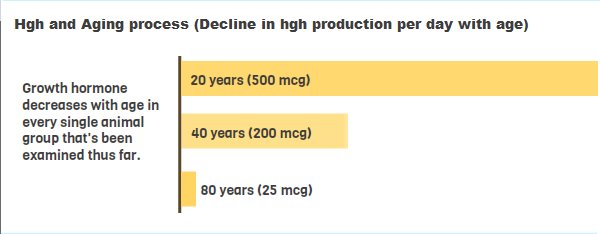
The best way to measure growth hormones within the body is usually measuring plasma IGF-1 levels. Less than 350 IU is believed proof of deficiency.
In between the ages of 20 and 40 yrs, under 5% of healthy guys have under 350 IU for every litre of IGF-1 levels. However after age 60, 30 % of seemingly healthy guys have this lower amount. And just after age 65, about 50 % of the society is partly or fully lacking in growth hormone.
WHY DOES GH DECLINE WITH AGE?
Nobody has been able to find a satisfactory answer to solve the above question. Studies have proved that the aging pituitary somatotroph cells can still release growth hormones if they are sufficiently stimulated.
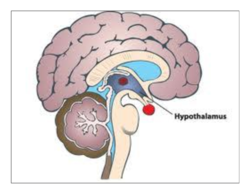 This basically means that the faults might be lying somewhere in the factors which regulate its release. There might be something that is occurring within the feedback loop during the discharge of IGF-1 inside the liver & the hypothalamus.
This basically means that the faults might be lying somewhere in the factors which regulate its release. There might be something that is occurring within the feedback loop during the discharge of IGF-1 inside the liver & the hypothalamus.
Usually when IGF-1 declines in its performance, it immediately passes a message to the hypothalamus that is situated in the brain to prompt the pituitary to produce extra growth hormones. But what usually happens is that when a person grows in age, the feedback loop begins to break down.

Researchers are of the belief that the main problem usually lies with Somatostatin, commonly known as the natural prevention of Growth Hormone. Somatostatin increases with age & has the tendency to block actions that enhance Growth Hormone. Researchers tried the Somatostatin examination on rats.
They removed Somatostatin action in old rats and it was found that the Growth Hormone pulses in old rats grew as big as that of young rats.
Many other researches believed that Precursor Hormone, Growth Hormone Releasing Hormone (GHRH) which is the main factors that releases Growth Hormone turns to be less responsive when it comes to feedback signals.
There are also chances that both things might be happening at the same time.
Natural Decreases Remain Inevitable. The body’s power to absorb, digest, and absorb proteins reduces as people age, losing a chance to digest protein and proper amounts of hydrochloric acids through digestive enzymes.
Called hypochlorhydria, this problem will become evident in many digestive diseases, including diabetes mellitus, hypothyroidism, chronic hepatitis, osteoporosis, and chronic autoimmune malfunctions.
The regular or chronic use of antacid drug therapy or anti-inflammatory drugs might impact these digestive issues.
Also, mature patients occasionally exacerbate these troubles by reducing their body’s production of hydrochloric acid by eating or drinking foods or drinks high in carbohydrates, sugars, alcohol, caffeine, and refined meals.
Growing older occasionally brings about increased stress or trauma, probably resulting in the hypothalamus to lose its ability to produce and discharge growth hormone releasing hormone-GHRH.
Adding to the problem, a lack of certain nutrients in the diet might bring about the downturn in production. In diabetics, high blood sugar levels reduce growth hormone-releasing activity.
Experts are finding that in a natural reaction to stress, the body generates glucocorticoid hormones that inhibit the effect of growth hormone production. And high levels of blood sugars and glucocorticoids stimulate the inhibitory hormone, somatostatin.
Everyday HGH secretion rate is decreased steadily with ever-increasing age. Total daily HGH secretion diminishes as we grow older therefore that elderly stages are attained by 35-40 years old.
Remarkably, scientific tests of individuals suffering from pituitary disease reveal that the losing of hormones within that gland adheres to a specific pattern.
It starts with growth hormone levels reducing, accompanied by the gonadal hormones, luteinizing hormone (LH), and then follicle-stimulating hormone (FSH), and lastly the thyroid-stimulating hormone (TSH) and adrenocorticotrophin (ACTH).
Therefore the decrease of growth hormone through the pituitary is the beginning within a downward stream on the pituitary hormones.
How stress and aging damage your HGH levels
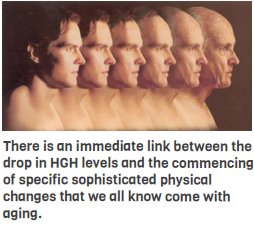
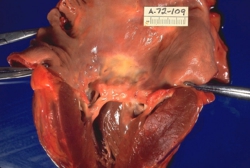 The decrease in hgh levels with age, occasionally called somatopause, is specifically related to many of the signs of aging, including: wrinkles, gray hair, reduced energy and vigor, decrease in libido, increased body fat and cardiovascular disease, osteoporosis, elevation of moods and the reduction of depression, and much more.
The decrease in hgh levels with age, occasionally called somatopause, is specifically related to many of the signs of aging, including: wrinkles, gray hair, reduced energy and vigor, decrease in libido, increased body fat and cardiovascular disease, osteoporosis, elevation of moods and the reduction of depression, and much more.
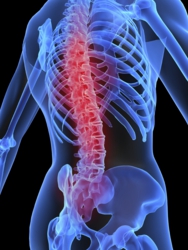 After you are 30, hgh levels beign to fall and after age 40, it declines even more rapidly so much so that daily hgh secretion reduces with age to the extent that a 60 year old may secrete less than 25% of the hgh secreted by an average 20 year old.
After you are 30, hgh levels beign to fall and after age 40, it declines even more rapidly so much so that daily hgh secretion reduces with age to the extent that a 60 year old may secrete less than 25% of the hgh secreted by an average 20 year old.
Nature’s Ingenious Hormone Triggers
Three distinct mechanisms or triggers play a critical role in the pituitary’s release of growth hormone and other hormones:
1. Daily brain interactions. These characteristics, sometimes called “circadian rhythms,” hinge on essential, daily sleep-wake cycles.
2. Negative feedback interaction. After a target organ gets some hormone that satisfies its needs, the pituitary stops production of those hormones-temporarily.
3. Other intervening influences. Factors such as stress, emotional trauma, nutritional illnesses, infections, and other actions in hormonal glands influence the secretion of the Master Hormone.
Doctors call the normal physiologic decline in hgh as we age “somatopause“, something like menopause in women and andropause in men. While researchers have yet to proclaim a specific reason for this decline, numerous factors might contribute, for instance a drop in available amino acid precursors required for the actual production within the pituitary gland.
Furthermore, the hypothalamus might sustain a decrease in its discharge of stimulatory hormones that produce growth hormone, while the hormone that inhibits its production-somatostatin might increase.
With aging comes a turmoil in major hormones in the body
Growth Hormone Axis
 Insulin-like growth factor I (IGF-I) mediates the peripheral actions of growth hormone (GH). The plasma levels of both GH and IGF-I decline with age. (The body composition changes previously discussed areas associated with these alterations in GH and IGF-I.)
Insulin-like growth factor I (IGF-I) mediates the peripheral actions of growth hormone (GH). The plasma levels of both GH and IGF-I decline with age. (The body composition changes previously discussed areas associated with these alterations in GH and IGF-I.)
The GH–IGF axis also plays a major role in metabolism efficiency and in antagonizing the adverse effects of chronic stress on the immune system. GH and IGF-I also have neuroprotective effects; therefore, reduction of these levels also has been shown to be associated with poor cognitive functioning.
Hypothalamic–Pituitary–Adrenal Axis
Although basal levels of cortisol are unchanged with age, peak cortisol levels and increased duration of a cortisol response to stress, such as after surgery, remain higher in older persons. This is due to a decline in sensitivity to the negative feedback inhibition of cortisol on the hypothalamus. Chronic stimulation of the hypothalamic–pituitary–adrenal (HPA) axis can lead to hypersecretion of glucocorticoids, in turn leading to deleterious affects on multiple organ systems.
Thyroid
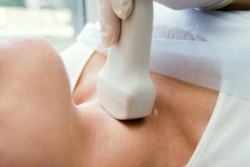 There appears to be a decrease in thyroid hormone (serum T4 and serum T3) with age; however, this decrease in thyroid hormone correlates with the decrease in metabolically active tissue (lean body mass) with age. The thyroid gland also atrophies with age.
There appears to be a decrease in thyroid hormone (serum T4 and serum T3) with age; however, this decrease in thyroid hormone correlates with the decrease in metabolically active tissue (lean body mass) with age. The thyroid gland also atrophies with age.
However, it appears that when the thyroid gland is stimulated, it can normally produce thyroid hormone. There is tremendous individual variability in these neuroendocrine changes. Exercise has been shown in several experimental studies to increase both GH secretion and insulin sensitivity.
Declining Testosterone and Andropause
Andropause is synonymous with a low testosterone level in older men that is certainly triggering symptoms. Testosterone levels decrease in males at the rate of 1% per year after 30 years of age.
Simultaneously, sex hormone-binding globulin levels increase. This results in even lower levels of free or bioavailable (free plus albumin-bound) testosterone.
Somewhere around 3% to 5% of men 40 to 50 years of age, and 40% to 70% of men 70 years of age, are hypogonadal. Many experts have estimated that there are 4 million to 5 million hypogonadal men in the United States.
The signs and symptoms of hypogonadism in older men are a decline in libido (enthusiasm for sex) and a diminished quality of erection. Testosterone energizes nitric oxide synthase, and so as it declines, insufficient levels inhibit the ability of phosphodiesterase-5 inhibitors (e.g., Viagra) to produce adequate erections.
You will need to understand that low libido is also the consequence of a variety of other conditions such as depression, medical illness, and social factors.
Low testosterone levels are connected with a decline in muscle mass, strength, and function.
 Testosterone replacement can alter these difficulties. Testosterone induces the production of satellite cells, suppresses the formation of preadipocytes, stimulates protein synthesis, and inhibits protein degradation with the ubiquitin-proteasome system.
Testosterone replacement can alter these difficulties. Testosterone induces the production of satellite cells, suppresses the formation of preadipocytes, stimulates protein synthesis, and inhibits protein degradation with the ubiquitin-proteasome system.
Testosterone management induces visuospatial cognition. Low testosterone levels at middle age predict an increase in Alzheimer’s disease in older persons.
Summary
As you can see aging is a complex process and brings about many hormonal changes in the body. While decline in hgh, the master hormone that has the most comprehensive effect on your wellness as you age, other hormone levels are crucial as well.
To beat the aging process, one needs to follow a smart diet and workout plan along with nutrients that can ignite the fire of youth once again.
The effect that occurs in the body is somewhat similar to what usually happens with other hormones or insulin’s. Usually with age, most of us tend to have less sensitive to insulin.
This leads to non-metabolism of glucose efficiently, thereby causing an increase in blood glucose.
 All across the globe about one-third of the older generation population, the insulin resistance that is related to something like that of a spare tire obesity which comes with aging, can it be termed as a severe disease?
All across the globe about one-third of the older generation population, the insulin resistance that is related to something like that of a spare tire obesity which comes with aging, can it be termed as a severe disease?
Type 2 diabetes, which is not so familiar than Type 1 diabetes, it is not that our bodies do not manufacture insulin, but what often happens is that the body tissues behave as though there is no more insulin present. The latest research proved that a similar occurrence takes place with Growth Hormones.
The Growth Hormone that is made accessible to the tissues not only lessens with age but also our tissues often do not respond to the Growth Hormone that is already available. Therefore, aging is often considered as an ailment of Growth Hormone resistance similar to the type 2 diabetes which is considered as an ailment of insulin resistance.